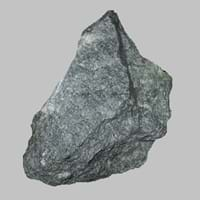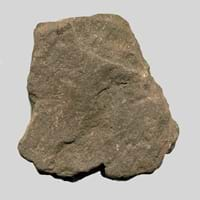Definition
It is a metamorphic magnesium rich rock because it is composed of the mineral talc
Shale is a fine-grained sedimentary rock which is formed by the compaction of silt and clay-size mineral particles
Discoverer
Unknown
Unknown
Etymology
From 17th century, because of its greasy feel and use like a soap
From German Schalstein laminated limestone, and Schalgebirge layer of stone in stratified rock. From Old English scealu in its base sense of- thing that divides or separate,
Class
Metamorphic Rocks
Sedimentary Rocks
Sub-Class
Durable Rock, Soft Rock
Durable Rock, Medium Hardness Rock
Group
Not Applicable
Not Applicable
Other Categories
Fine Grained Rock, Opaque Rock
Fine Grained Rock, Opaque Rock
Texture
Polished
Clastic, Splintery
Color
Black, Black to Grey, Green, Grey
Black, Brown, Buff, Green, Grey, Red, Yellow
Durability
Durable
Durable
Appearance
Dull, Banded and Foilated
Muddy
Interior Uses
Bathrooms, Decorative Aggregates, Homes, Interior Decoration
Decorative Aggregates, Homes, Interior Decoration
Exterior Uses
As Facing Stone, Garden Decoration
As Building Stone, As Facing Stone, Office Buildings
Other Architectural Uses
Curbing
Curbing
Construction Industry
Manufacture of Magnesium and Dolomite Refractories
Cement Manufacture, Construction Aggregate, for Road Aggregate, Making natural cement, Raw material for the manufacture of mortar
Medical Industry
Taken as a Supplement for Calcium or Magnesium
Not Yet Used
Antiquity Uses
Artifacts, Jewellery, Monuments, Sculpture
Artifacts, Sculpture
Commercial Uses
Cemetery Markers, Creating Artwork, Gemstone, Jewelry, Manufacture of Soap, Solvents, Dyes, Plastics and Fibres, Production of Lime, Source of Magnesia (MgO)
Creating Artwork, Pottery
Types
Not Available
Red Shale, Black Shale, Green Shale, Grey Shale and Yellow Shale
Features
Host Rock for Lead
Easily splits into thin plates, Generally rough to touch, Very fine grained rock
Archaeological Significance
Famous Monuments
Christ the Redeemer in Rio de Janeiro, Stonehenge in English county of Wiltshire
Jantar Mantar in India
Famous Sculptures
Data Not Available
Data Not Available
Formation
Soapstone is a talc-schist, which is a type of metamorphic rock and it is largely composed of the mineral talc and is thus rich inmagnesium.
Shale forms when very fine-grained clay particles are deposited in water which settle at the bottom of water bodies. They are later compacted hence forming shale.
Mineral Content
Albite, Apatite, Biotite, Calcite, Carbonate, Clay Minerals, Hornblende, Ilmenite, Micas, Plagioclase, Pyroxene, Quartz
Albite, Biotite, Calcite, Chert, Chlorite, Dolomite, Hematite, Micas, Muscovite or Illite, Pyrite, Quartz, Silica, Sulfides
Compound Content
CaO, Mg, MgO
Ca, Fe, Mg, Silicon Dioxide, Sodium
Types of Metamorphism
Burial Metamorphism, Cataclastic Metamorphism, Contact Metamorphism, Hydrothermal Metamorphism, Impact Metamorphism, Regional Metamorphism
Not Applicable
Types of Weathering
Not Applicable
Biological Weathering, Chemical Weathering, Mechanical Weathering
Types of Erosion
Not Applicable
Chemical Erosion, Coastal Erosion, Glacier Erosion
Grain Size
Fine Grained
Very fine-grained
Fracture
Conchoidal
Not Available
Porosity
Less Porous
Highly Porous
Specific Gravity
2.86
2.2-2.8
Transparency
Opaque
Opaque
Density
2.8-2.9 g/cm3
2.4-2.8 g/cm3
Resistance
Heat Resistant, Pressure Resistant
Heat Resistant, Impact Resistant
Deposits in Eastern Continents
Asia
China, India, Indonesia, Japan, North Korea, Russia, Saudi Arabia, Singapore, South Korea, Sri Lanka, Tajikistan, Thailand
Bangladesh, China, India, Russia
Africa
Egypt, Ethiopia, Ghana, South Africa, Western Africa
Ethiopia, Kenya, Morocco, South Africa, Tanzania
Europe
Austria, England, Finland, France, Germany, Greece, Spain, Sweden, Switzerland, United Kingdom
Austria, France, Germany, Greece, Italy, Romania, Scotland, Spain, Switzerland
Others
Not Yet Found
Not Yet Found
Deposits in Western Continents
North America
Canada, USA
USA
South America
Colombia
Bolivia, Chile, Colombia, Ecuador, Peru, Venezuela
Deposits in Oceania Continent
Australia
Central Australia, New Zealand, Queensland
New South Wales, New Zealand, Queensland, Victoria, Western Australia
All about Soapstone and Shale Properties
Know all about Soapstone and Shale properties here. All properties of rocks are important as they define the type of rock and its application. Soapstone belongs to Metamorphic Rocks while Shale belongs to Sedimentary Rocks.Texture of Soapstone is Polished whereas that of Shale is Clastic, Splintery. Soapstone appears Dull, Banded and Foilated and Shale appears Muddy. The luster of Soapstone is greasy while that of Shale is dull. Soapstone is available in black, black to grey, green, grey colors whereas Shale is available in black, brown, buff, green, grey, red, yellow colors. The commercial uses of Soapstone are cemetery markers, creating artwork, gemstone, jewelry, manufacture of soap, solvents, dyes, plastics and fibres, production of lime, source of magnesia (mgo) and that of Shale are creating artwork, pottery.










